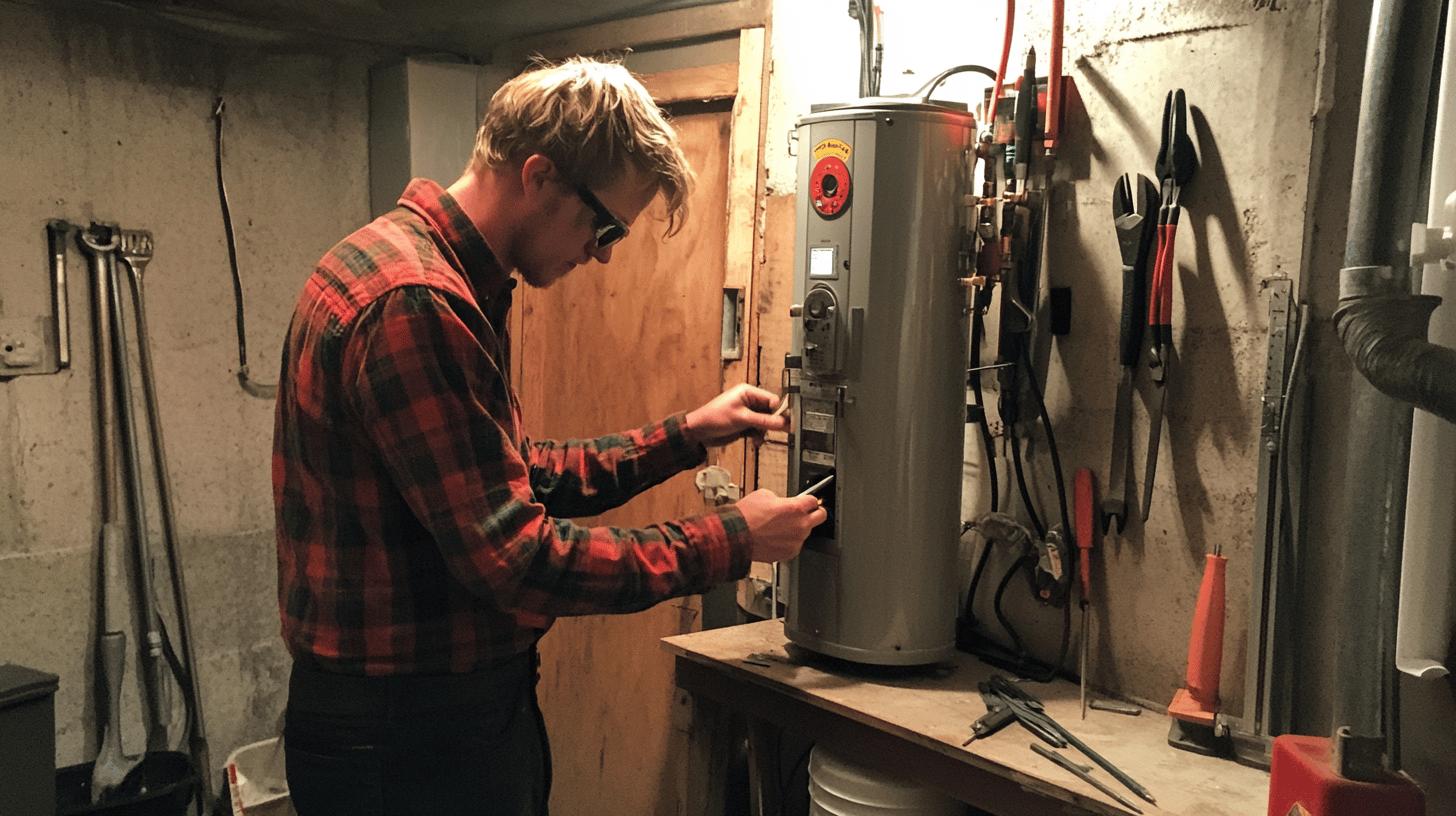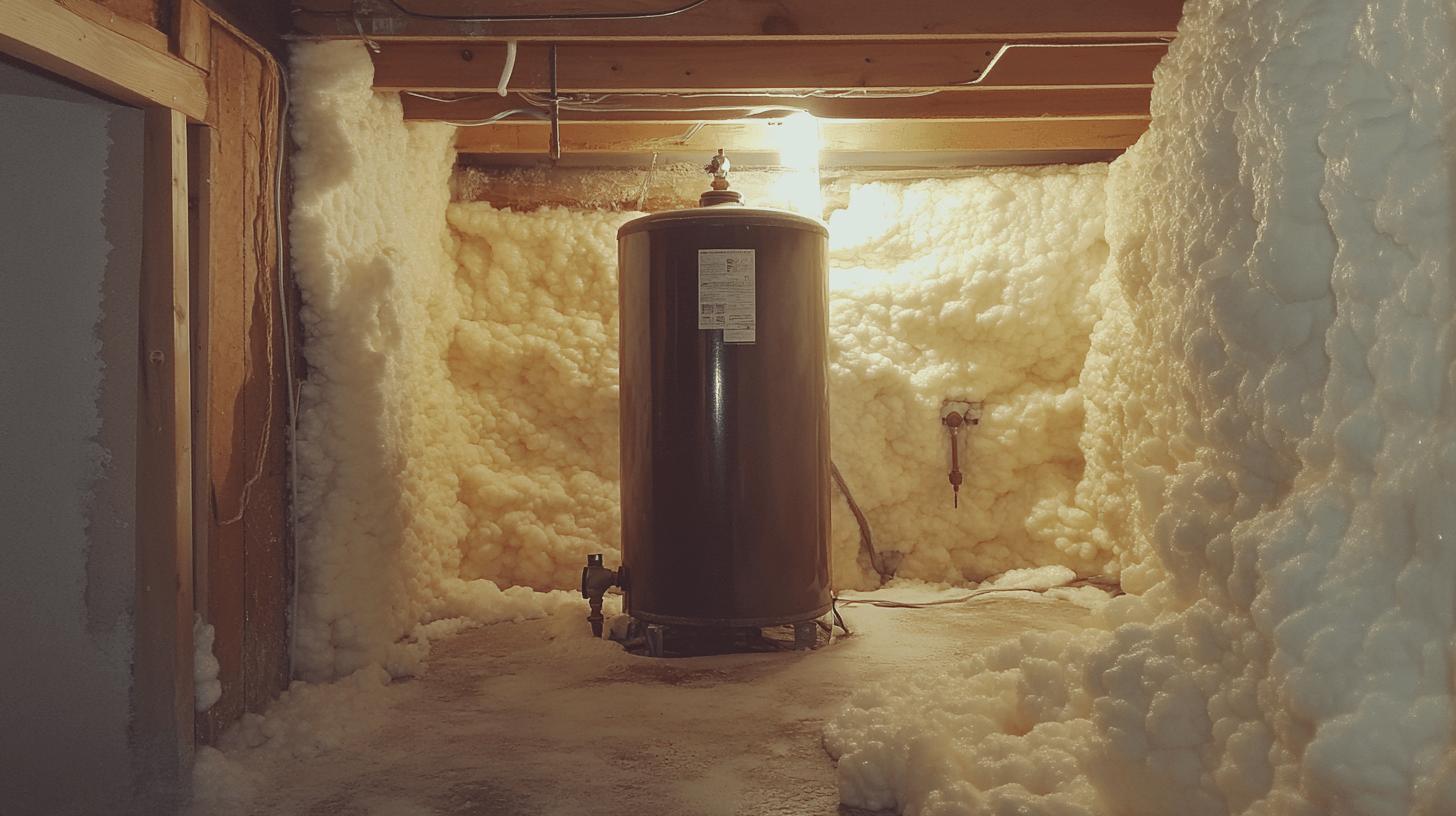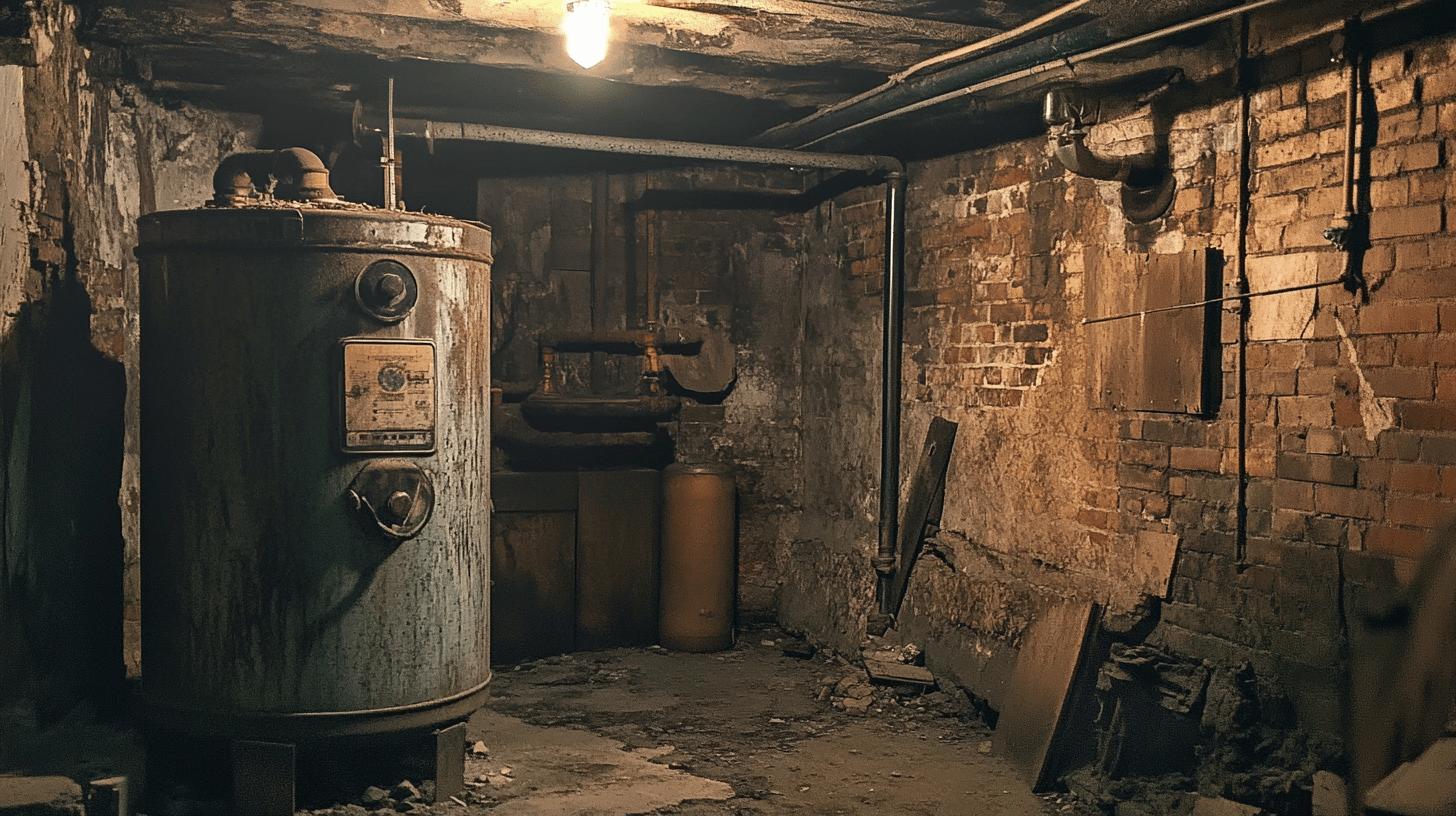TL;DR:
- Causes of Heat Loss:
- Sediment Buildup: Decreases heating efficiency.
- Faulty Thermostat: Causes inconsistent temperatures.
- Heating Element Issues: Malfunction leads to poor heating.
- Insufficient Capacity: High demand results in rapid heat loss.
- Troubleshooting:
- Check thermostat settings.
- Inspect for leaks or damage.
- Test dip tube and heating elements.
- Professional Solutions:
- Replace broken dip tubes and faulty heating elements.
- Flush sediment from the tank.
- Calibrate or replace faulty thermostats.
- Efficiency Tips:
- Ensure proper insulation.
- Adjust temperature to 120-140°F.
- Consider energy-efficient models.
- Perform regular maintenance checks.
Is your hot water not as warm as it used to be? You’re not the only one dealing with this issue, and it often leads homeowners to wonder, “Why is my hot water heater losing heat?” Knowing the reasons behind this can help you avoid cold surprises during your showers and keep your water heater working well. Common causes include sediment buildup, broken thermostats, and faulty heating elements. Let’s look at these reasons for heat loss and why regular maintenance is important to prevent those unexpected cold moments. It’s time to tackle the problem and get your hot water back to normal!
Common Causes of Heat Loss in Hot Water Heaters
Hot water heaters can lose heat for several reasons, causing inefficiencies and discomfort. One big reason is sediment buildup in the tank. As the water heats up, minerals like calcium and magnesium settle at the bottom, creating a layer of sediment that acts like an insulator. This makes it hard for the heater to keep the water at the right temperature.
Thermostat problems can also lead to heat loss by not controlling the temperature properly. Malfunctioning heating elements often struggle to reach or maintain the right temperature. Plus, if the heater doesn’t have enough capacity, it can feel like it’s losing heat, especially in homes that use a lot of hot water.
- Sediment Buildup: Minerals collect in the tank and decrease heating efficiency.
- Faulty Thermostat: Poor temperature control results in inconsistent water temperatures.
- Heating Element Issues: Dysfunctional elements don’t heat water well.
- Insufficient Capacity: Demand exceeds capacity, leading to rapid heat loss.
These problems usually happen because of regular use without maintenance. Doing regular inspections and cleaning of the tank can help prevent sediment buildup. Checking the thermostat and replacing any broken heating elements is important for keeping everything running smoothly. Hiring professional plumbers for regular maintenance can spot and fix issues early on, which can extend your water heater’s life and boost its performance.
Troubleshooting Heat Loss in Water Heaters

If your water heater is losing heat, start with some basic troubleshooting. First, check the thermostat settings—wrong settings can lead to not enough hot water. Next, look for any visible damage or leaks on the heater. If it seems fine on the outside, the problem could be something inside, like sediment buildup or a broken dip tube.
Adjusting Temperature Settings
Setting the right temperature is key for keeping heat in your water. For home water heaters, it’s best to set the temperature between 120 and 140 degrees Fahrenheit. This range heats the water effectively without wasting energy. To adjust the temperature, locate the thermostat, usually behind a panel. First, turn off the power to avoid any electrical hazards. Then, adjust the dial to your preferred setting and turn the power back on. Check the water temperature after a few hours to see if it’s right.
- Thermostat Replacement: Replace faulty thermostats to control temperature properly.
- Dip Tube Inspection: A broken tube mixes hot and cold water, cutting efficiency, needing inspection and possible replacement.
- Heating Element Testing: Test malfunctioning elements; they might need a replacement.
- Sediment Flushing: Regular tank flushing stops sediment buildup, improving efficiency.
- Insulation Checks: Proper insulation around the tank and pipes helps keep water hot and prevents heat loss.
Professional maintenance is essential for keeping your water heater in good shape. Certified plumbers can catch problems early and provide the right fixes, like replacing parts or flushing out sediment. This not only helps your heater last longer but also keeps it running efficiently, saving you time and hassle.
Professional Solutions for Persistent Heat Loss Issues
When your water heater keeps losing heat, getting a professional inspection is a must. Why should you call a certified plumber? They can accurately diagnose the problem and provide the right fixes. Service calls usually cost between $80 and $200, but this can help you avoid expensive damage down the line. Common issues they tackle include dip tubes and heating elements, which require specialized tools and expertise that only licensed plumbers possess.
| Problem | Professional Solution |
|---|---|
| Broken Dip Tube | Replace to ensure proper water flow. |
| Faulty Heating Element | Test and replace to restore efficiency. |
| Sediment Buildup | Flush the tank to remove deposits. |
| Thermostat Malfunction | Calibrate or replace for accurate control. |
Why choose professional help instead of DIY fixes? Complex issues require expert knowledge and experience. Professionals make sure replacements and repairs are done right the first time, which reduces the chances of the problem coming back. They also offer warranties on their work, giving you peace of mind and protecting your investment.
Enhancing Water Heater Efficiency and Heat Retention

Poor insulation can cause a lot of heat loss in water heaters. If the insulation isn’t good enough, heat escapes easily, making the heater work harder and use more energy. To keep the water temperature stable, make sure your heater is well-insulated. Check the insulation on the tank and pipes, and add more if needed. Good insulation helps keep the heat in and boosts efficiency.
- Pipe Insulation: Insulate hot water pipes to reduce heat loss on the way to your tap.
- Temperature Adjustment: Set the heater between 120 and 140 degrees Fahrenheit to save energy.
- Installing Heat Traps: Heat traps let water in but reduce the flow out, preventing unwanted heat loss.
- Upgrading to Energy-Efficient Models: New models use less energy while offering the same hot water.
- Regular Maintenance Checks: Routine inspections find and fix potential issues before major heat loss occurs.
These energy-saving tips provide long-term benefits. Improving insulation and making eco-friendly upgrades reduce energy use and lower your bills. This not only extends your water heater’s lifespan but also keeps it performing at its best. Investing in these measures can lead to significant savings and promote a sustainable home, making it a smart choice for an efficient heating system.
Final Words
Understanding why a hot water heater loses heat can help you avoid surprises with your hot water supply. We’ve looked at how sediment buildup, thermostat problems, and faulty heating elements contribute to heat loss. Tackling these issues with regular maintenance, good troubleshooting, and professional help can greatly extend your water heater’s effectiveness.
Improving your water heater’s efficiency with better insulation and energy-saving upgrades will not only keep your water at comfortable temperatures but also save you money on energy bills in the long run. Stay proactive about maintaining your water heater for reliable and comfortable hot water.
FAQ
Q: What are common hot water heater problem symptoms?
A: Common symptoms include insufficient hot water, fluctuating water temperature, strange noises, and unusual odors from the heater. These can indicate sediment buildup, thermostat failure, or a malfunctioning heating element.
Q: Why is my electric hot water heater not getting hot enough?
A: Electric water heaters may struggle due to sediment buildup, faulty thermostats, or broken heating elements, all of which affect heating efficiency.
Q: What should I do if my electric water heater is not working?
A: First, check the power supply and reset the thermostat. If it still doesn’t work, inspect the heating elements or circuit breakers for tripping.
Q: Why is “hot water not working but cold is” a common issue?
A: If cold water is available but not hot, the problem may lie in the heater’s thermostat, heating element, or power supply.
Q: Why is my gas water heater not getting hot enough?
A: For gas heaters, a pilot light issue, a faulty thermostat, or gas supply interruptions can lead to inadequate heating.
Q: How do I reset my hot water heater?
A: Locate the reset button, typically on the thermostat. Press it firmly to reset. If issues persist, professional servicing may be necessary.
Q: Why does a hot water heater lose heat over time?
A: Normal wear and tear, sediment buildup, and aging components like thermostats and elements can cause heaters to lose heating efficiency.
Q: What could cause my hot water not to get as hot as usual?
A: Causes include a malfunctioning thermostat, faulty heating element, or problems with the gas or power supply affecting performance.
Q: How can I address a new hot water heater not working?
A: Ensure proper installation and connections. Check power supply, settings, and breakers. If problems persist, consult a professional installer.
Q: Why would a hot water heater make less hot water?
A: Reduced hot water can result from a broken dip tube, sediment buildup, incorrect temperature settings, or a malfunctioning heating element.
Q: How can I improve the efficiency and heat retention of my water heater?
A: Improve efficiency with proper insulation, regular maintenance, temperature adjustments, installing heat traps, and possibly upgrading to energy-efficient models.

